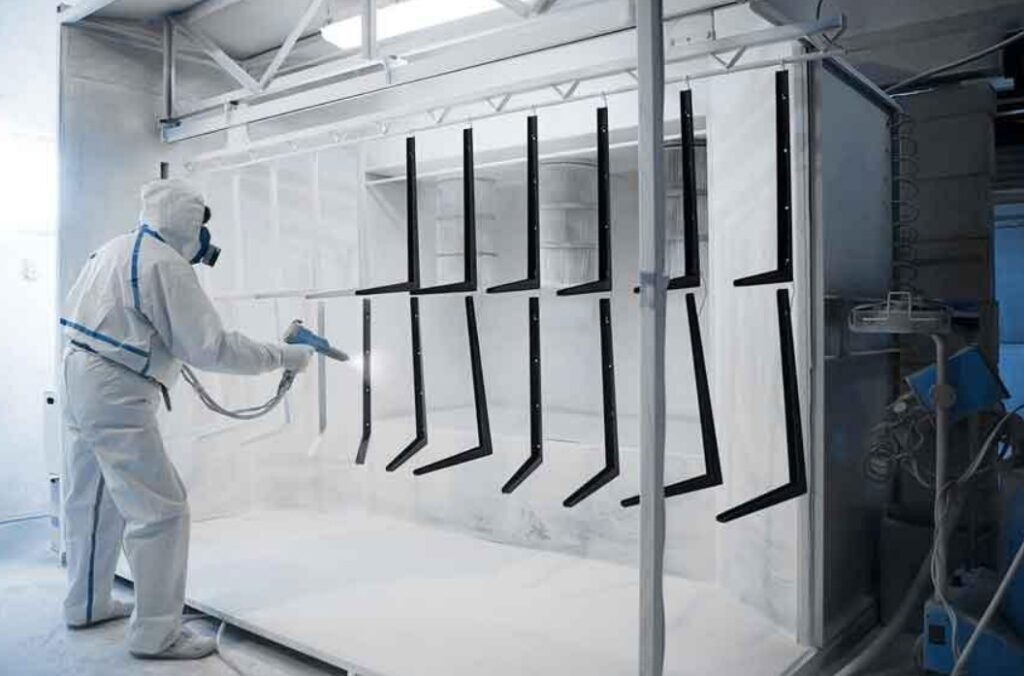Flakes or platelets of aluminum, copper, copper-zinc alloys, zinc, and other metals make up metallic effect pigments. These flake pigments or pastes can be used to create unique aesthetics (strong color flop, high metallic brilliance, etc.). in numerous coatings applications. Additionally, numerous metallic pigments can be utilized to enhance functional properties. Metallic effects can enhance a variety of functional properties, such as resistance to corrosion, thermal durability, and barrier resistance. Read More Business News on our website.

They are metal flakes of high quality. Contained by means of a grinding and granulometric separation process that confer characteristics of particle distribution fake type opacity and brightness.
Raw Material for Manufacturing of Metallic Pigments
Electrolytic copper : Purity of 99.9999% Minimum
Zinc on Plate: Purity of 99.99% Minimum
Aluminum foil: Purity of 98% Minimum
Atomised aluminium foil : Purity of 99% Minimum
Characteristics of Metallic Pigments Properties
There are four kinds of Metallic Pigments:
- Powder
- Paste
- Pellet
- Dispersion
For powder coatings generally it is the powder which is intensely used and to some extent palletized pigments. Paste form is generally used for liquid paints and decorating paints; automotive applications, OEM and many more, and so for the dispersion.
The Difference between Leafing aluminum paste and Non-Leafing Aluminum Paste
Leafing: The type that leaves on the coating film’s surface has a low surface tension. It has a high reflection and resembles chrome, but the flakes are easy to peel off the coating surface, making recoating difficult. Anticorrosive coatings, roof coatings, tanks, cans, and other applications are the majority. Leafing provides better orientation and very bright texture.
The Non-Leafing variety can absorb all of the paint’s moisture and spread evenly throughout the film without sinking. The coating film is durable, hard, and recoatable. It has numerous applications in automobiles, furniture, electronic goods, coil coating, and other fields.
One must note, both are dependent and suitable for the kind of application.
Flake Geometry and Particle Distribution
The flakiness, the closest particle size defines it’s quality and speaks for its characteristics. The particle distribution curve helps manufacturers to understand the geometry of the particle size.
Generally, the particle sizes are measured by two mechanisms:
D50 and D97
D50 generally the one understood in global market and the different curves. The lower is with the finest particle, further the medium and the top curve is the one with the closest particle size.
Powder Coating Process
Powder coating is made in multiple steps. Because it begins as a batch process (weighing and premixing) but evolves into a continuous process (extrusion and milling), it can be described as semi-continuous. The manufacturing and quality control procedures, there are several distinct stages in the cutting-edge technology used to produce industrial powder coatings, including:
Metal flake or mica particulate matter is what gives metallic and mica powder coatings their distinctive appearance. These flakes and details constitute a distinct component. Dry-Blended powders are metallic powder coatings that are mixed uniformly with a base color powder. They are available in TGIC Polyester, Hybrid, Epoxy, and Hybrid chemistries.
Color consistency, limited penetration into recesses, and a limited recycling potential are the drawbacks of dry-blended powder coating. A corona gun with a flat spray nozzle is typically utilized for the application of dry-blended powder coating. The physical bonding of metallic and mica powder coatings to the powered coating’s surface is the method of processing. Although most metallic or mica particles are bonded, some may not be firmly attached, which can cause a variety of issues during the finishing process.
More easily recyclable than dry blended powder coating, bonded metallic powder coating and mica powder have fewer lines. In addition, they provide color that is more consistent after recycling, has less of a picture frame effect, and has a higher transfer efficiency and better penetration. Even though bonded metallic and mica powder can be recycled, it is always best to use as little virgin powder as possible to get the best finish possible. There are epoxy, hybrid, urethane, and TGIC polyester chemistry options for bonded powder coating.
Properties
Pigments can be used in a variety of ways because of certain characteristics. The following are some properties that make a good pigment:
Maximum covering power
Particle sizes between 0.2 and 0.4
Power to mix freely
Good chemical resistance
Acceptable levels of hardness, brilliance, and stability on printed and dyed goods
Good resistance to light, wetness, and abrasion Chemical inertness
Excellent dispersion
They become suitable for various applications depending on their toxicity, heat stability, staining, tinting strength, opacity, and dispersion.
Handle with Care Because Safe Handling Is The Key to Successful Application
Store the product in a dry and cold place, away from fee points or heat generation
Handle the product with buckets and anti-spark shovels preferably aluminum or brass
Avoid the formation of Dust clouds
Prohibit the use of sources of ignition in the product areas
Production equipment must be grounded to electricity or static
Avoid hitting metal with metal or metal with concrete or other spark generating sources during the production process
In case of combustion, never use water or extinguishers containing halogenated hydrocarbons ONLY USE DRY SAND
Avoid product contact with water or oxidizing substances
Land the drums and buckets prior to handling the product
Keep the drums and buckets closed after they have been used
Respiratory protection: It is recommended to use powder cartridge masks
For hands and body: It is recommended to wear gloves, 100% cotton clothing
For eyes: Wear safety glasses or a mask
